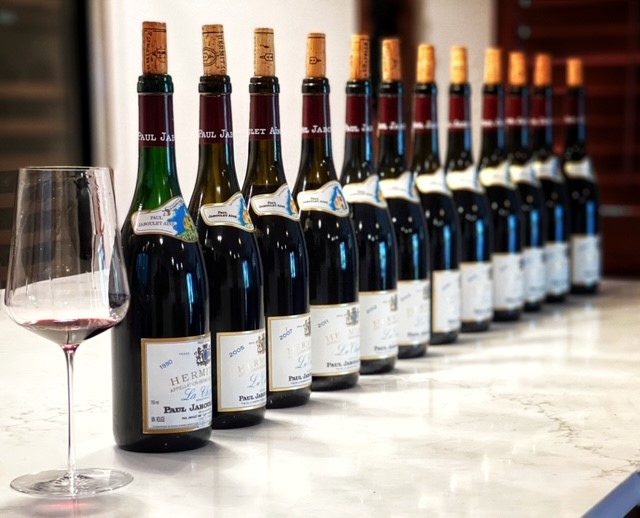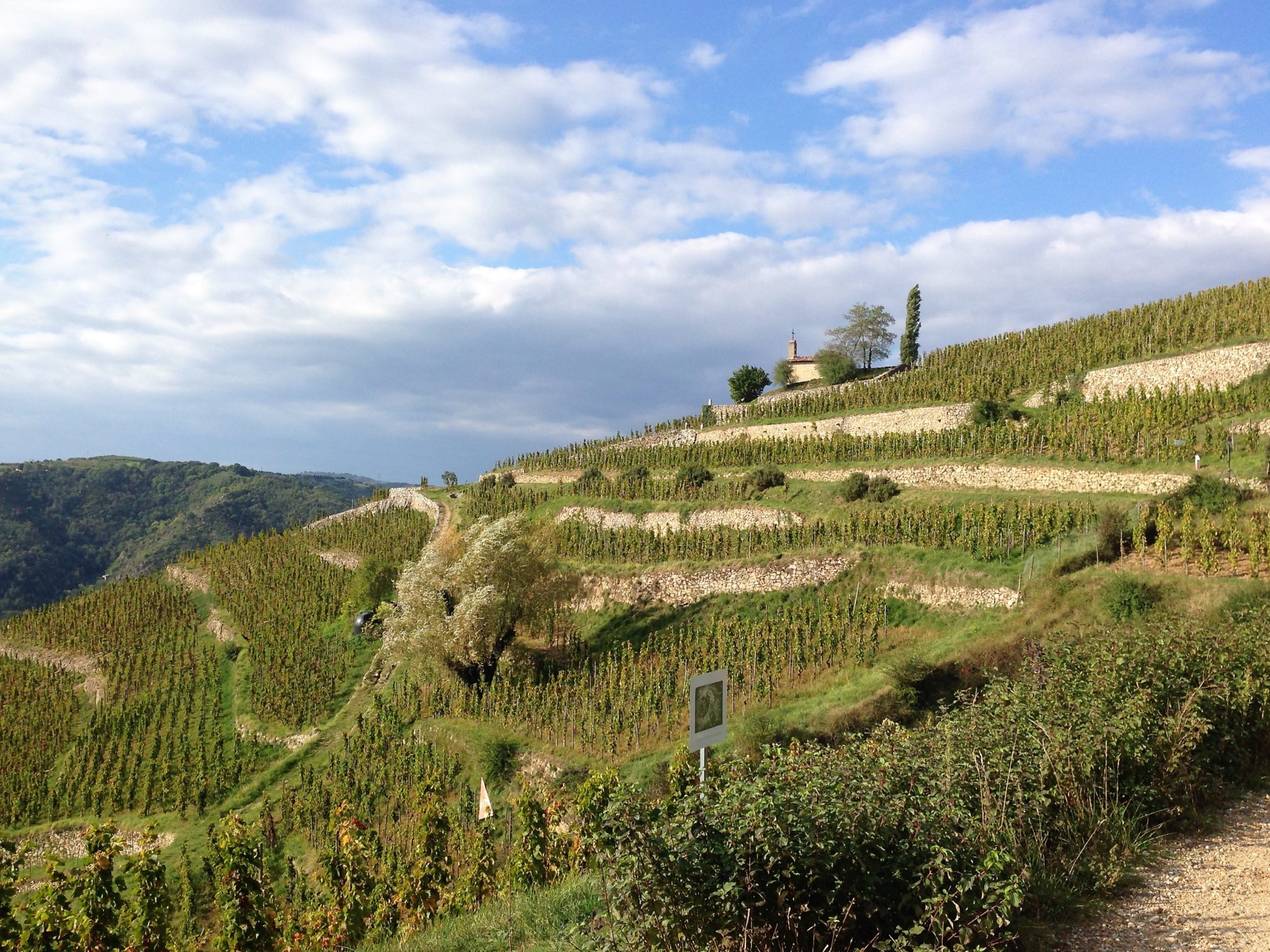
This retrospective looks at the flagship of Paul Jaboulet Aîné, which is unquestionably one of the stars of the world of wine today. Created in 1834 by Antoine Jaboulet, this estate was passed down to his sons Paul and Henri, with the oldest son (Aîné means elder in French), Paul, giving the estate its current name. Louis Jaboulet and his son Jacques managed the estate up through 1977 and were responsible for the all-time greats such as the 1949, 1959, and 1961. With Louis’s retirement in 1977, the helm fell to Jacques and his brother Gérard, with Jacques managing the cellar and Gérard becoming the estate’s ambassador worldwide. Unfortunately, with the tragic death of Gérard at age 55 in 1997, this large family-run estate lost its sense of direction, yields increased, and quality suffered in the late 1990s and early 2000s, which was very apparent in this retrospective.
In January of 2006, Jean-Jacques Frey, whose family are investors in the Champagne house of Billecart-Salmon and own the Bordeaux estate La Lagune, purchased the estate. His daughter, Caroline Frey, the winemaker at Château La Lagune since 2004, took over the running of the estate. She immediately doubled the vineyard staff, modernized the cellar, moved all viticulture toward organic farming, implemented a second wine, and slashed yields, all with the focus firmly on improving the quality of the wine. Frey was involved in blending the 2005 and 2006, with 2007 being the first vintage where she was in complete control.
Looking at the estate today, Paul Jaboulet Aîné owns 22 hectares of Syrah in Hermitage, with the most significant holdings in le Méal (6.8) and Bessards (2.6), with smaller parts in Rocoules and Greffieux. The flagship wine is the Hermitage La Chapelle, which is named after the tiny chapel at the top of Hermitage Hill. It is important to realize that the La Chapelle is not a single-vineyard bottling but a blend determined via blind tastings in the cellar. Nevertheless, the le Méal is always most of the blend, and it’s this hot, south-facing terroir that defines this cuvée with its smoky, meaty, almost soy-laced profile that emerges with bottle age. Thick and unctuous in its youth, it takes roughly a decade for this wine to shed its tannin, with most hitting full maturity at age 10-15 and having upwards of two decades after that of prime drinking. Top vintages can hold for an incredible amount of time, and this is one Hermitage that can challenge the drink windows of great Bordeaux.
Looking at the wines reviewed for this article, there is an undeniable drop in quality starting in the mid-1990s, with the 1999 and 2000 being clear disappointments, and it’s not really until 2009 (the 2003 is terrific, however) that the quality catches back up with the reputation of this estate. I’ve written in the past that the estate was well on its way to making future legends such as the 1961, 1978, and 1990 with the change in ownership. I think their 2009, 2010, 2012, 2015, 2016, 2018, and 2019 under the guidance of Caroline all unquestionably bear that out today.

All of these wines were shipped from the estate to my office in Colorado and were tasted in May of 2022. None of the wines were over the hill, and the vast majority benefited from plenty of air. This estate is one case where you shouldn’t be afraid to decant older vintages. In addition, the 1990 (tasted from two bottles) had been recorked at the Domaine in 2020. While brilliant bottles, neither were as youthful as a handful of previous bottles I’ve had over the past 4-5 years. It’s hard to say whether that’s simply the state of the wine today or due to the recorking. Regardless, these wines are ready to drink and offer immense pleasure, so don’t make the mistake of never opening a bottle.
As always, thanks for reading, and happy hunting,
Jeb

